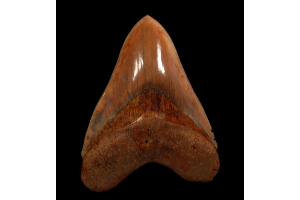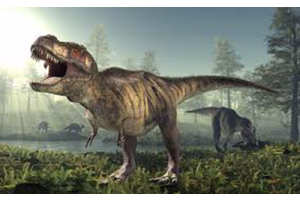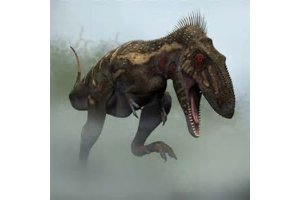Page 3 - Home Page Latest Post
- - August 11, 2025
In the remote fossil beds of the Atlas Mountains in Morocco, a remarkable creature has captured the awe of both paleontologists and collectors alike. This extraordinary arthropod, Erbenochile erbeni, wasn't just another ocean-dwelling organism from the Devonian period—it was a visual marvel. Known for its dramatic spines and stunning eye architecture, this species has brought renewed attention to the beauty and scientific importance of the trilobite fossil. For those fascinated by ancient life, our collection offers both scientific insight and genuine excitement, especially with a variety of trilobites for sale.
A Fossil That Changed the Way We See Ancient Eyes
Trilobites, some of the earliest and most fascinating arthropods, burst onto the scene during the Cambrian explosion, thriving for an astonishing span of over 270 million years. Their remarkable and extensive fossil record serves as a crucial window into the evolutionary journey of exoskeletons, the process of molting, and the
- - August 11, 2025
Dinosaurs, the mighty rulers of Earth’s distant past, continue to fascinate us with their immense size, power, and the mystery surrounding their extinction. Their legacy fuels imagination and awe across generations. Today, that fascination can take a tangible form. For collectors, enthusiasts, and natural history admirers, owning a real piece of this ancient world is no longer just a dream. Buried Treasure Fossils brings it within reach with an extraordinary selection of dinosaur fossils on sale from the Jurassic and Cretaceous periods. Each authentic specimen offers a rare glimpse into prehistoric life and a lasting connection to Earth’s ancient history.
Here are a few aspects to consider about dinosaur fossils:
A Window Into the Cretaceous and Jurassic Eras
Dinosaurs roamed the Earth for more than 160 million years, with the Jurassic and Cretaceous periods standing out as their golden ages. During these timeframes, a wide variety of iconic dinosaurs thrived — from the massive, bone-crushing
- - August 11, 2025
Have you ever looked at a stone and wondered if it once belonged to something alive—something that roamed the Earth long before humans existed? There’s a quiet magic in fossil hunting that goes beyond science and enters the realm of connection. When you hold a fossil, you're not holding a rock. You're holding a story. One such story is told through an ancient molar—a Gomphotherium tooth for sale, a piece of prehistoric history preserved in stone.
Between the lines of age and geology lies the tale of a creature that once trampled forests and plains, long before mammoths ruled the tundra. Let’s step gently into this ancient world and discover why a single fossil can hold so much significance for those who cherish the past.
The Mammal Before Mammoths
Long before mammoths became symbols of the Ice Age wonder, the Gomphotherium walked the Earth. It wasn’t a giant in the way dinosaurs were, but it had an unmistakable presence. Shaped like an elephant but with distinct differences, this ancient
- - August 11, 2025
When you think of prehistoric power and natural awe, few things compare to the toothy legacy of the Great White shark. These apex predators, both feared and revered, have captivated scientists, collectors, and ocean lovers for generations. But beyond the myths and movie madness, Great White teeth hold a prized place in the world of fossil collecting. Why? Their rarity, exceptional condition, and undeniable collector appeal make them one of the most sought-after fossils on the market today.
Let’s take a closer look at what makes these iconic teeth such a standout in any fossil collection.
Nature’s Design: Why Great White Teeth Are Instantly Recognizable
The Great White shark—scientifically known as Carcharodon carcharias—is a true marvel of evolution. One of the most defining characteristics of this species is its teeth. Wide, triangular, and densely serrated along the edges, they are designed to cut through flesh and bone with surgical precision.
Unlike many other fossilized teeth,
- - August 11, 2025
At first glance, a hammerhead shark tooth might just look like a sharp, fossilized relic. But dig a little deeper, and you’ll find it’s so much more; it’s a piece of a vast and intricate puzzle that spans millions of years. These teeth aren’t just souvenirs of ancient creatures; they’re keys unlocking mysteries about evolution, climate change, and life beneath the waves long before humans ever existed.
This blog takes you beyond the surface to explore some of our most remarkable fossil discoveries, including hammerhead shark teeth and jaw-dropping specimens from multiple Sphyrna species, such as the Great Hammerhead.
With teeth dating from the Eocene all the way to the Pleistocene, these fossils offer unique insights into how these iconic sharks adapted, thrived, and shaped their underwater world. Ready to uncover what a shark’s tooth can teach us? Let’s dive in.
The Hammerhead’s Evolutionary Journey in Fossil Teeth
Hammerhead sharks belong to the genus Sphyrna, easily recognized by the
- - August 11, 2025
There’s something timeless and mesmerizing about ammonites. These extinct marine creatures left behind intricate spiral shells that, millions of years later, continue to inspire awe and admiration. At Buried Treasure Fossils, we proudly offer a thoughtfully curated and expansive collection of ammonite fossils that celebrate nature’s ancient design. Each fossil tells a silent story from Earth’s distant past—one that you can hold, admire, and display.
Whether you’re an experienced fossil enthusiast or a newcomer fascinated by natural history, our offerings provide an extraordinary opportunity to connect with the prehistoric oceans that once covered our planet.
A Rich Diversity from Around the World
Our collection is as diverse as the places these ancient creatures once roamed. We carry ammonites from a wide range of globally recognized fossil regions including France, Madagascar, Morocco, and Russia. Each origin brings its own distinctive qualities, shaped by geological forces unique to
- - August 11, 2025
Pine cones have fascinated people for centuries—partly for their rustic beauty and partly for their sheer mystery. But when you come across a giant pine cone, the kind you’ll see in fossil collections or even on high-end collector websites featuring large pine cones for sale, you might wonder: Are these tough, prehistoric structures nature’s armor? Or are they simply massive seed carriers from an ancient world?
Let’s peel back the layers—just like a cone—and find out.
What Exactly Is a Pine Cone?
To begin, a pine cone isn’t just a decorative object you find scattered on hiking trails. It’s the reproductive organ of pine trees—more specifically, a seed-bearing structure for conifers. There are male and female cones, but the large ones we’re most familiar with are the females. These are responsible for protecting seeds until they’re mature enough to be released and carried off by wind, gravity, or animal helpers.
And while today’s cones are impressive, the real jaw-droppers come from
- - August 11, 2025
Millions of years ago, a sleek, serrated-tooth predator ruled the warm coastal waters of what is now North America, Europe, and parts of Africa. Today, that same marine hunter exists not in the oceans, but in fossil collections and museum displays. Revered by fossil lovers and paleontology buffs, the snaggletooth shark and its uniquely curved teeth—especially from the extinct species Hemipristis serra—have transitioned from terrifying predator to sought-after relic. Here at Buried Treasure Fossils, we proudly offer a curated selection of these teeth, prized for their rarity, beauty, and historical significance.
From Ocean Predator to Fossil Rarity
The snaggle tooth shark, scientifically known as Hemipristis serra, made its first appearance during the Oligocene epoch, which dates back approximately 30 million years. This ancient shark belonged to the Weasel shark family, a group known for their agile hunting abilities and distinct dental adaptations. Over time, Hemipristis serra evolved
- - August 11, 2025
Beneath layers of earth and time lies a delicate world forgotten by most but remembered by stone. These are not monuments or artifacts crafted by human hands—they are whispers of life itself, preserved with quiet precision. From tiny fins to delicate spines, fossilized fish from ancient lakebeds reveal a world teeming with movement and mystery. Somewhere in the middle of this incredible history lies the charm and significance of green river formation fossils, a subject of deep fascination for collectors, educators, and curious minds alike.
A Window into a Prehistoric Freshwater World
Roughly 50 million years ago, the region that now encompasses parts of Wyoming, Colorado, and Utah looked vastly different from its current appearance. Back then, it was home to a series of large, subtropical lakes that supported a wide array of plant and animal life. These waters provided nourishment, shelter, and balance to an ecosystem whose residents left behind one of the richest fossil records ever discovered.
- - August 11, 2025
Something is grounding about the presence of a fossil. Unlike most collectibles, it doesn’t speak of a decade or even a century—but of an era so distant that human existence hadn’t even begun. These ancient remnants, pulled from prehistoric layers of sediment and sand, awaken our sense of curiosity and reverence for Earth’s vast history. One such fossil, rare and visually striking, is the tooth of an extinct shark species known for its size and legacy.
About midway through the Oligocene epoch, the oceans were home to a creature that would someday leave behind one of the most beautiful and distinctive relics in the field of fossil collecting today. That relic—a serrated tooth bearing both strength and symmetry—can still be found by those who know where and how to look. For those interested in adding such a relic to their collection, an Angustidens shark tooth for sale is more than an acquisition. It is an invitation to connect with nature's long story.
Let’s explore what makes these teeth







